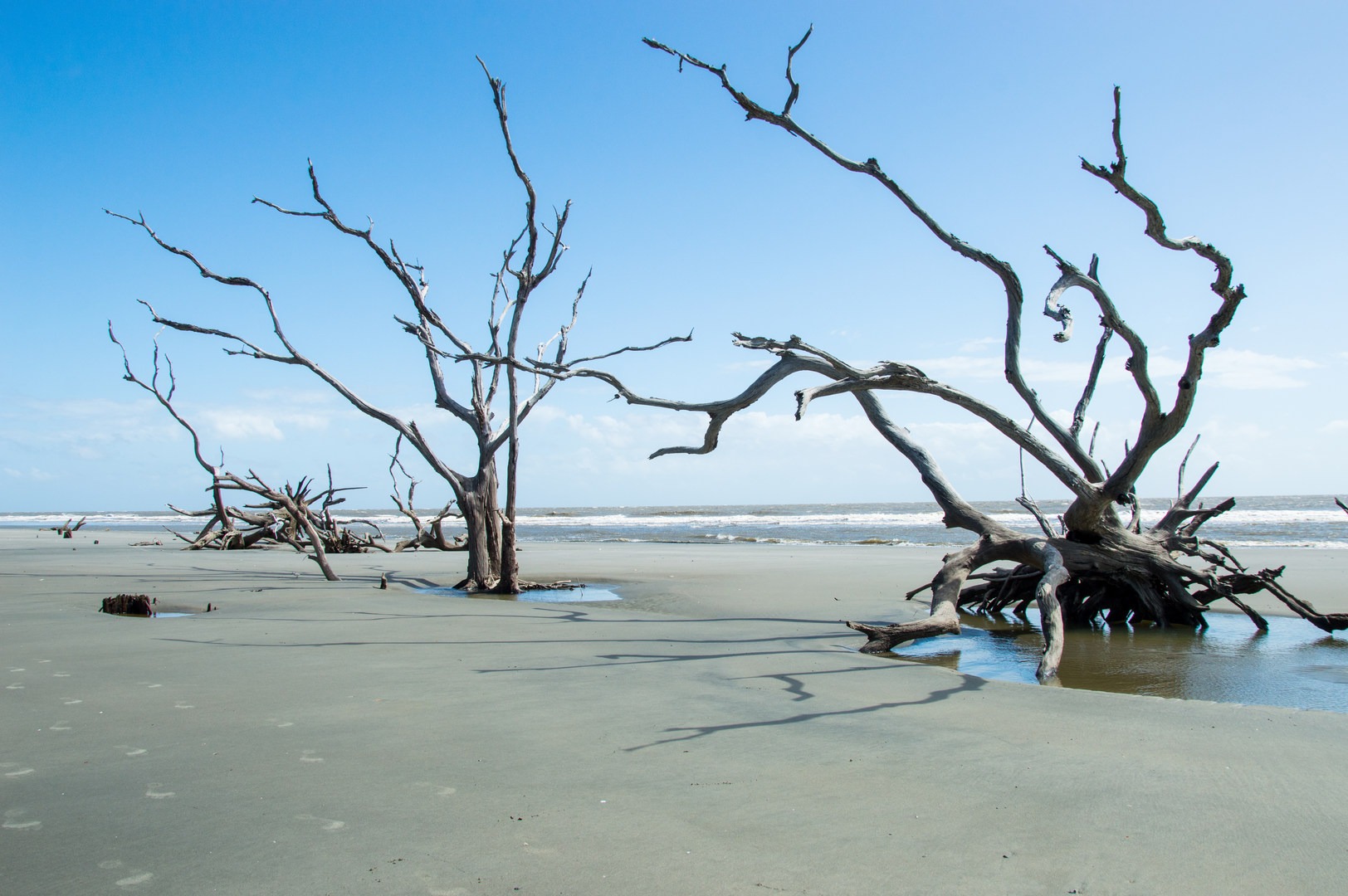You are here
Overview and history
Cape Romain National Wildlife Refuge is a 22-mile stretch of barrier islands, intracoastal marsh, and shallow bays that remain mostly undeveloped, despite its proximity to Charleston. Since its establishment in 1932, the refuge has protected habitat for migrating birds and other coastal wildlife and also preserved the human history, which is particularly rich on Bulls Island.
The native Sewee Tribe used Bulls Island as a hunting ground, so it has apparently always been favored by wildlife. It still supports more than 200 bird species as well as alligators, deer, raccoons, foxes, bobcats, black fox squirrels, and dolphins in surrounding water. The island was frequented by Spanish explorers since nearly the beginning of European exploration in the area, and the bay behind Bulls was the original landing site of the British fleet that would establish Charleston in 1670. From colonial times until the early 20th century, Bulls was used in one phase or another for coastal lookouts, pirate hideouts, rice cultivation, and a private hunting retreat.
Today, Bulls Island is a visitor-friendly destination for wildlife viewing, hiking, beachgoing, and photography. Many miles of trail crisscross the island, freshwater impoundments support loads of birds and alligators, and a wide sandy beach invites all-day relaxation. One of the most interesting and photogenic locations is Boneyard Beach--where erosion has overtaken part of the forest, leaving only sun-bleached skeletons of trees at the mercy of sand and surf.
How to get there
Bulls is only accessible by ferry or private boat, and public visitation is limited to daylight hours, though overnight tours are available. The ferry and tour service is run by concessioner Coastal Expeditions. Trips leave from Garris Landing near the town of Awendaw. Alternatively, you can launch your own kayak from here and paddle to Bulls Island.
Once on the island, you have many options for how to spend your time, and there is more than can easily be done in one day. Choose your hiking route based on what you are most interested in. Trails and water bodies are marked on maps that are available from the ferry service and posted on signs on the island.
What to do
For the beach, follow the Beach Road 1.5 miles straight across the island from the ferry dock. Along the way you are likely to see alligators in the impoundments on either side of the path. To find more gators and other wildlife, wander along Alligator Alley Trail, or visit the wildlife viewing platform on Upper Summerhouse Pond or the observation tower on Jacks Creek. For a history tour, check out the short Middens Trail, then walk through a long stretch of quiet forest on the Old Fort Road to find a stone remnant of Spanish occupation. Boneyard Beach is on the island's northeastern end. The quickest way to get there is to take Beach Road, then walk along the sand to the east. It is 5.75-miles round trip to get there this way. Other routes have more varied scenery, but they are longer.
What to bring
The best way to get around is on foot. Most of the trails are grassy and uneven, but they allow for easy walking. Bicycles are allowed, but they must be arranged in advance to bring on the ferry. There is one restroom and picnic area with tables close to the ferry dock, but other than that there are no public facilities. Drinking water is not available anywhere, so bring plenty of your own as well as snacks and everything else you might need for the day. Mosquitoes can be bad along the trails, so come prepared.
Note: Pets and camping are not allowed on Bulls Island.
Logistics + Planning
Current Weather: Powered by Dark Sky






























Comments
Sign In and share them.